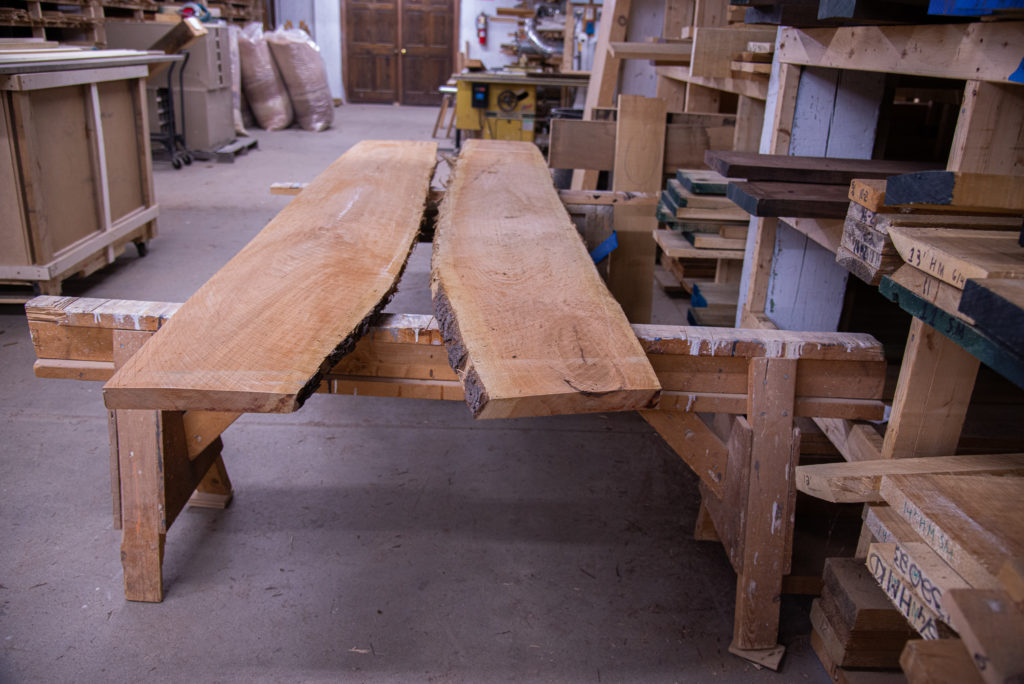Posts Tagged ‘specialty lumber’
Selecting the Right Wood Supplier For Your Wood Moulding
Searching for custom wood moulding to provide to your customers can be a headache. You want to provide the best product for your clients, but don’t want to have to charge them extra to get the high quality. When searching for the best wood supplier, consider the information below. 1. Wealth of Experience A company…
Read MoreWhat’s New (and What Never Changes) at Barney & Carey Co.
Like just about every other business right now, we at Barney & Carey Co. are often finding it harder to come up with certain materials; however, by reaching out to other mills and wholesalers, we have been able to get what we—and what our customers—need. Quality can be an issue these days, especially with hardwoods. Whenever I am allowed to do so—even at some additional cost—I will personally go to these suppliers and hand pick our wood.
Read MoreHobby Wood for Your Next Woodworking Project
“Hobby wood” is just another name for shorter pieces of very high quality hardwoods and softwoods. I never fail to be astounded at some of the completed small projects our customers bring in to show us, from simple cutting boards to magnificent mantle clocks, bird carvings, and just about anything you can imagine…
Read MoreAll About Reclaimed Wood & Antique Lumber
We are always on the lookout to purchase reclaimed and antique lumber, and will travel considerable distances to get it! This consists of beams, joists, rafters, flooring, and siding from buildings that are demolished or renovated, ideally from mills that were constructed in the 1800’s or early 1900’s. The age makes a huge difference, because almost all of the timbers that went into these buildings was from “old growth” forests. Species like Southern Yellow Pine, Douglas Fir, Red and White Oak, and Eastern White Pine, all grew slowly in very dense forests, competing for every ray of sunlight. Many saplings and smaller trees were crowded out, while the survivors grew tall and straight, with few branches, and few knots in the wood.
Read MoreTake 75% Off at the Barney & Carey Co. Yard Sale!
We are making room for more pine, hardwoods, and hardwood slabs, and selling off a bunch of items to help out!
Read MoreJust Arrived: Hardwood & Pine Slabs
Recently, I was able to purchase a couple loads of such materials. We have wide, “live edge” slabs in Black Walnut, Black Cherry, White Oak, Red Oak, and Eastern White Pine. These run from 1″ to 3″ in thickness, along with some 4″ and 6″ pieces ideal for mantel tops. We also have a limited amount of American Elm, Maple, and a few other species.
Read MoreSpecialty Lumber & Woodworking Supplies Are Our Bread & Butter
In addition to stocking some of the finest hardwoods, hardwood plywood, and Eastern White Pine, Barney & Carey Co. also carries a nice assortment of woodworking supplies. For example, we recently started manufacturing our own “Perfectly Square Blocks.” These are used when clamping together cabinet face fronts—and cabinets—to square them up perfectly. We offer them in small, medium, and large sizes, and make them out of 1″ Baltic Birch Plywood. Baltic Birch is a superior plywood, with many more plies than fir and other hardwood plywoods. The result is a much more stable product that lies perfectly flat and will not warp.
Read MoreLive Edge Lumber & Slabs: Out With the Old & In With the New
Back in the 1950s and 1960s, it was kind of a fad to use live edge lumber on the gable ends of ranch and split-level houses. Many people, myself included, thought this was a total mismatch of architectural styles, but it sure was big for a while. “Live edge” boards are flat sawn for the width of the log, which ideally should have a wavy pattern on one side, due to protrusions from tree branches, etc.
Read MoreWainscoting and Beadboard: The Sky’s the Limit
In the 1500s, wainscoting was no more than a wall covering. Today, however, when it comes to wainscoting & beadboard, the sky’s the limit.
Read MoreCustom Moulding vs. Stock Moulding: The Pros & Cons
Years ago, there were basically two types of casings available; “colonial” and “clamshell,” in either 2 1/2″ or 3 1/2″ widths. Of course those two old standbys are still around, also available in finger jointed versions, either primed or bare wood. I refuse to use anything that is finger jointed. If you buy finger jointed mouldings, you…
Read More









